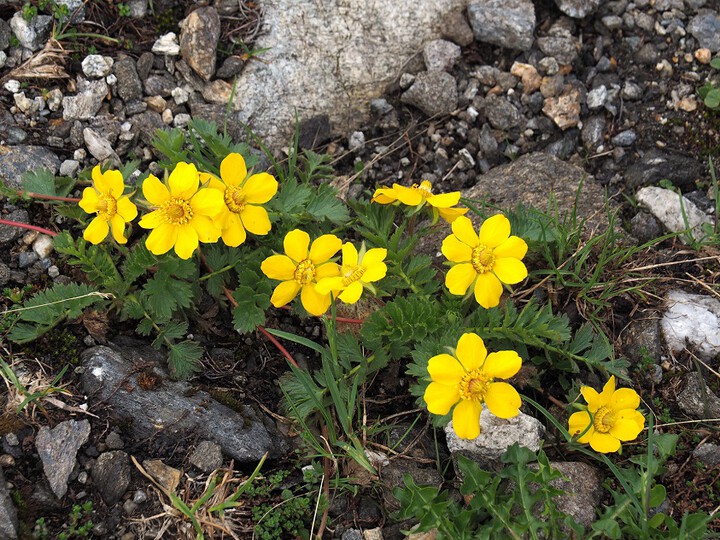Your garden needs these happy yellow blooms.
Creeping avens, also known as Geum reptans, can make a cheery addition to any home garden. The yellow blooms grow as a natural groundcover but can be contained to smaller areas with regular maintenance. Follow this advice from two professional gardeners and get the most from these herbaceous perennials this growing season.

Start with Plants
While there are plenty of different flowers you can grow from seeds, our experts suggest starting your creeping avens from a plant for the best results. "If you're growing it as a groundcover, you will probably be happier buying a starter plant from your local garden center so it can get established and start growing right away," explains Justin Hancock, a Monrovia horticultural craftsman. He says another benefit is that you'll know exactly what you're getting if you start with an established plant, which is very important if you're hoping for a specific breed of Geum since there are more than one.
If you prefer to grow them from seed, you can either plant them directly into your garden after the final spring frost or start them indoors about two months prior to the final frost. Since they do spread, it's best to give them plenty of room and plant them six to nine inches apart.
Location, Location, Location
Once you're ready to plant your flowers, make sure you're putting them in a location where they will thrive. According to Hancock, that means avoiding areas with heavy clay soil or in low areas of your garden where water may pool. "They do best in all-day sun and well-draining soil," he says. "They prefer neutral or slightly acidic soil; in high-pH soils, it can be beneficial to treat the soil with an acidifier (such as sulfur)." Under normal conditions, they shouldn't require fertilization, but gardeners looking to give their plants a boost can use any general-purpose garden fertilizer in early spring. They will do best in USDA zones four through eight, with plants growing in the middle range fairing the best.
Bring the Outside In
If you're looking to brighten up your indoor spaces by taking clippings from your well-established plant, Hancock suggests doing so earlier in the day when the air (and sun) is much cooler. "The warmer the air, the faster the flowers will fade," he says, adding that this type of flower may not fare as well as a clipping in your home. "Because it's a groundcover with short stems, I'm not sure I see much of a benefit to cutting it!" However, if you're determined to bring them inside, Hancock says keeping them cool will help them stay fresh longer.
As with any cuttings from your garden, you'll want to be sure to use cleaned and sterilized scissors or clippers. "Best way to cut these flowers for a longer enjoyment indoors [is to] cut [the] stem at the base: this will encourage the plant to put on new growth as well," explains Vernic Popat, the CFO of PlantOGram.com. "Cut the stem at an angle and place in room temperature water and enjoy them."
Consider Health Benefits
And the benefits of growing these flowers don't stop at the garden's edge. According to Popat they can also have major health benefits as well! "In Austria they are considered traditional medicine," she says. "The [flowers are made into a tea] and they are a treatment for gout, infections, fever, and herbalist use it to treat diarrhea, heart disease, halitosis, and mouth ulcers." Of course, be sure to check with your doctor before taking this, or any form, of herbal remedy.